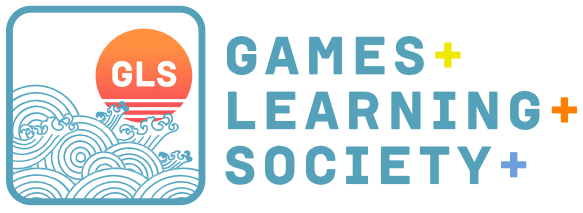Doom Scroll Among Us Mod
An Among Us game mod to teach media literacy and combat misinformation
August 2022 - February 2024
Doom-scroll is an Among Us mod prototype to help people identify signs of misinformation, reflect on their experiences and learn from them.
Contributions
Primary Role
Lead Developer
Responsibilities
- Lead Developer of the game using C#, Bepinex, HarmonyX view GitHub Repository
- Translate conceptual design into game systems, requirement specification, and use cases
- Conduct playtesting, observe player interaction with the game and facilitate focus groups
- Analyze playtest data, turn the findings into design decisions, and write study report
- Mentor undergraduate students in C# and game development
Github repository
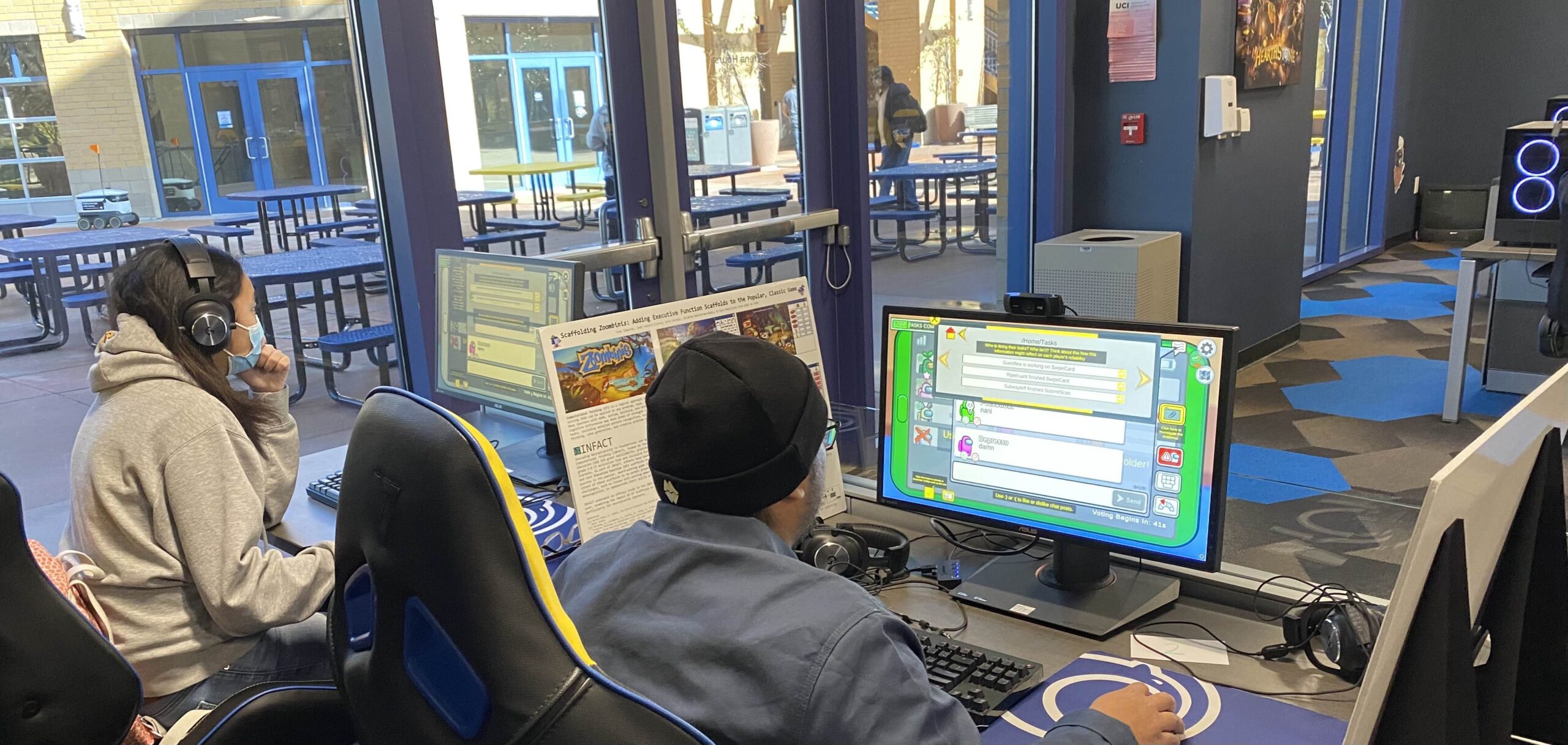
Published article
Garrison Wells, Agnes Romhanyi, and Alaina Klaes. 2024. Sus: Modifying Among Us for Misinformation Discernment. In Proceedings of the 19th International Conference on the Foundations of Digital Games (FDG '24). Association for Computing Machinery, New York, NY, USA, Article 58, 1–4. https://doi.org/10.1145/3649921.3656990
Overview
This case study reports on the iterative design, development, and playtesting of DoomScroll, an Among Us game mod.
The purpose of the game is combat misinformation by teaching players lateral reading to recognize the common indicators of fake news and unreliable sources.
During the game, players become both creators and victims of misinformation.
They learn to recognize common signs of misinformation and the motivations behind them.
Collaborators
- Gary Wells
Ph.D. student and graduate researcher at UCI,
Project lead. - Alaina Klaes
Undergraduate student researcher at UCI,
Game developer and designer.
Design Goals
Misinformation is an inherently social concept yet no other misinformation game offers a multiplayer mode with replayable, evergreen narrative.
We wanted to develop a competitive multiplayer gameplay that prompts players to judge the validity of information under social pressure profoundly mirroring the real-world scenario. Replayability was our other objective to motivate players to repeat the training and strengthen their skills in discerning misinformation.
Why modding Among Us?
As a multiplayer social deception game, Among Us’s theme and objective are well aligned with our core concept, allowing us to easily incorporate misinformation elements.
By building a mod to Among Us instead of building a multiplayer game from scratch, we were able to work faster and begin testing the concept sooner.
We also expected modding a popular title to be an asset when searching for study participants.
Developed game mechanics
Secondary Win Condition
in addition to their tasks as crewmates or impostors, players now have to either frame (kill or get voted out) or protect (keep alive) another randomly assigned player.

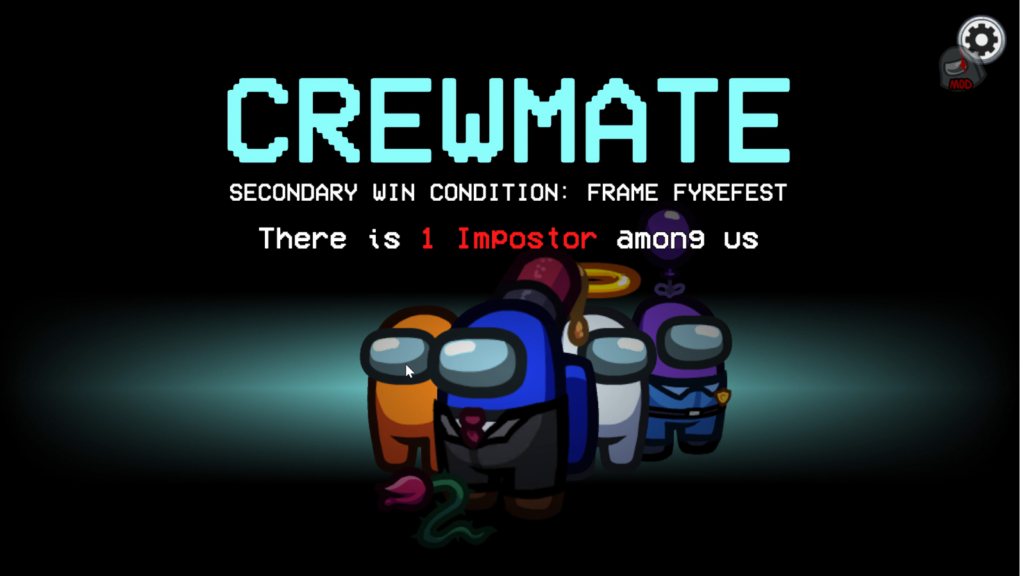
Photo evidence
One player between each meeting can take a screenshot of the scene. The images record the site without the photographer being included.
Images are collected in the evidence folder and can be viewed and shared during the meetings.
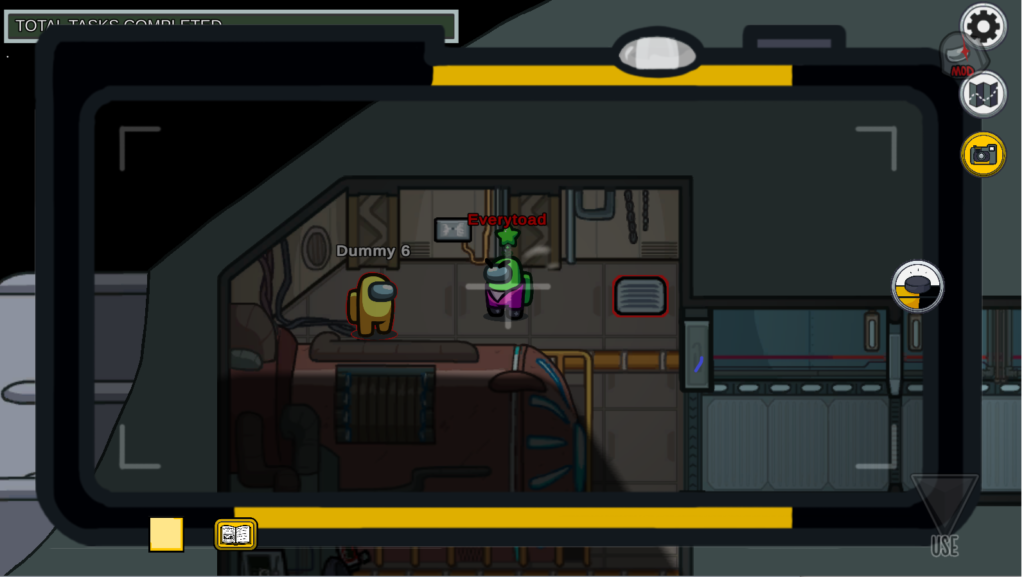
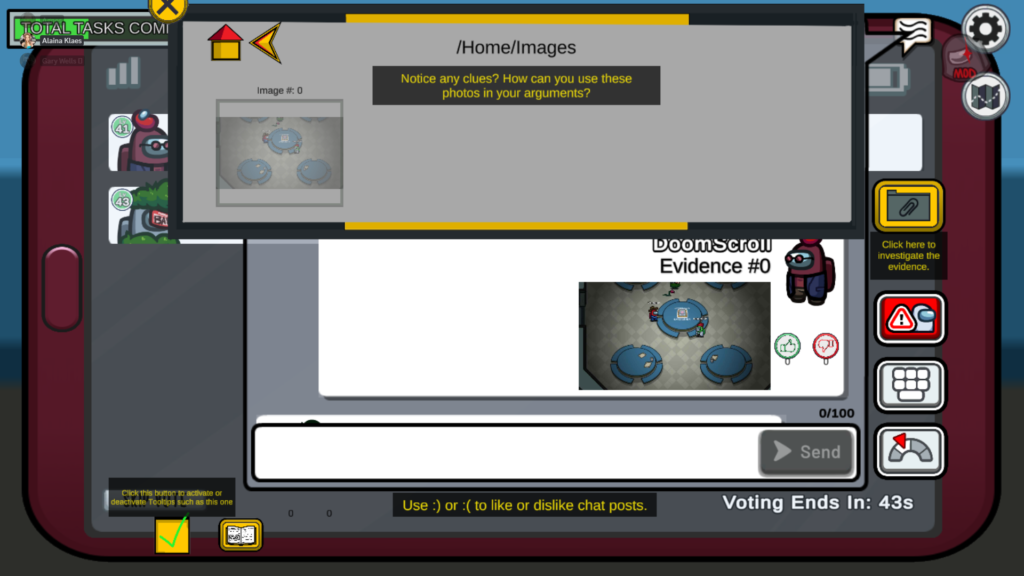
Headlines
Each player has to create a headline to protect or frame a fellow player. After selecting a target, they can choose from five random generated (fake and true) news to post and share with others. The posted headlines are kept in the evidence folder and can be viewed and shared during the meetings.
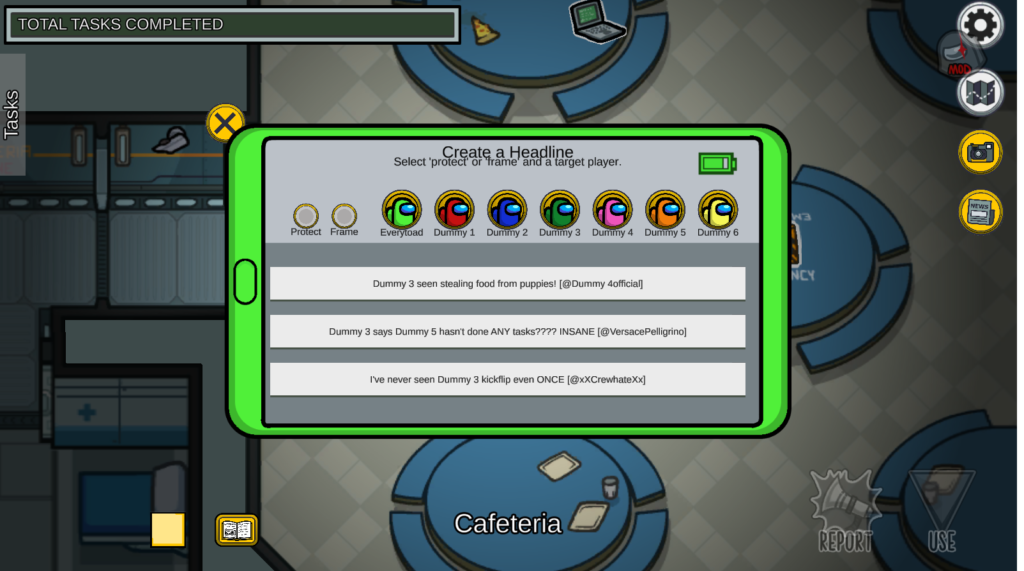
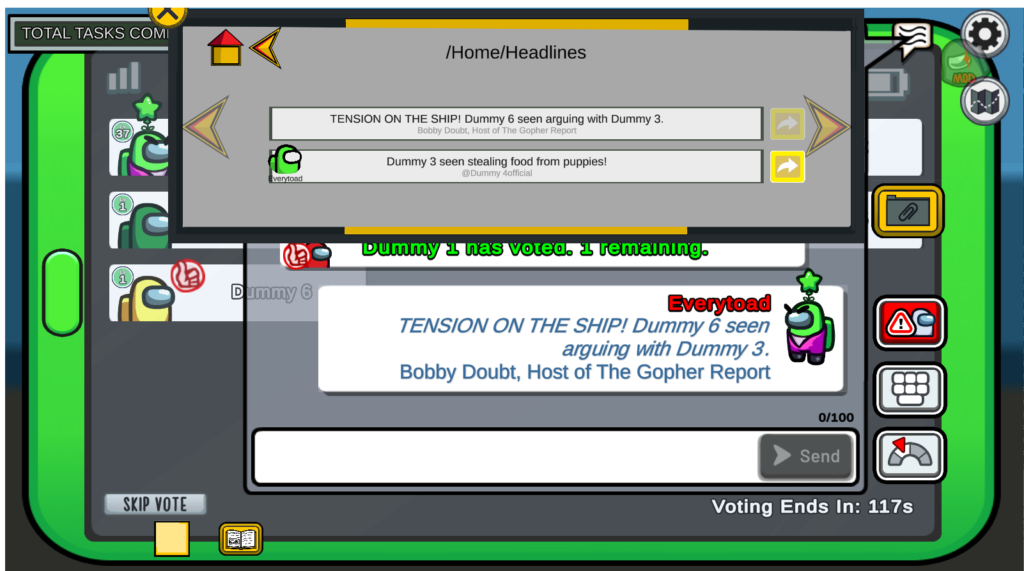
Headline Sorting
To encourage players to read and analyze all of the created headlines, we added a headline sorting session to the of the meetings. To practice recognizing common identifiers of misinformation, such as bold claims, hyperbolic statements, sources mimicking reliable news outlets, every player has to decide whether or not each headline is trustworthy. To win as a crew, 75% of the players has to vote correctly on every item.

Task Sign-ins
For two randomly selected tasks crewmates now can assign any other players when completing a task to make the selected player look like an innocent crew member working on their assignments.
The sign-ins are kept in the evidence folder and can be viewed and shared during the meetings.
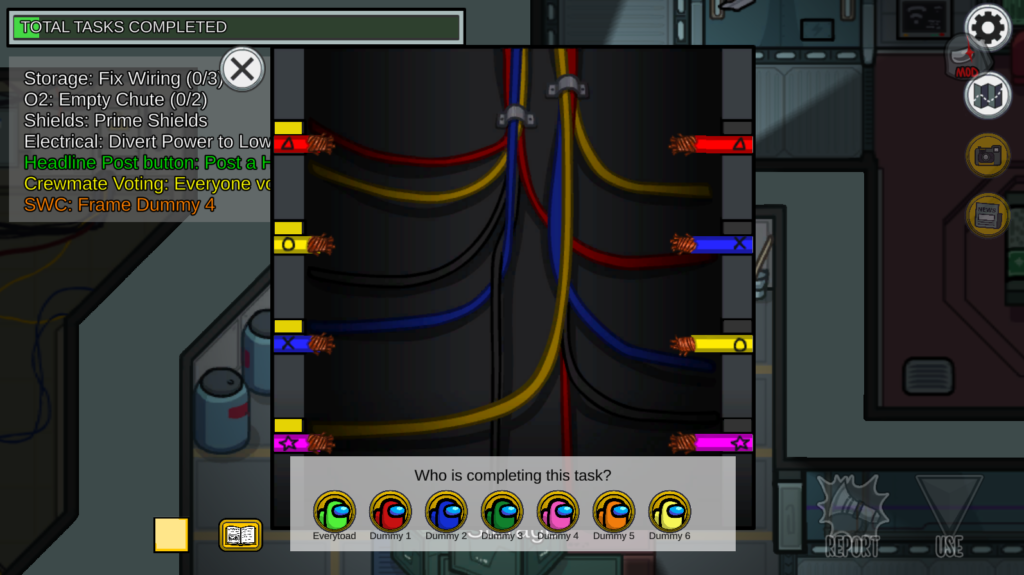

Evidence Management
During emergency meetings players can see the collected evidence (headlines, task sign-ins, and screenshots) the can share these in the chat and use them to reach their secondary win conditions.

Technical challenges
Although Among Us supports game mods and has a generous mod policy, modifying an existing game without the source code and editor tools is not an easy process.
The base Among Us game doesn’t have a modding API or third-party packages, such as uMod 2.0 or ModTool for accessible modding. Additionally, it uses IL2CPP packaging, which – unlike Mono – employs Ahead-of-time (AOT) compilation and compiles the code into machine-readable language, making it harder to reverse engineer and modify.
Finding the appropriate methods to inject code at runtime and extend classes without being able to add members and functions were the most significant challenges.
Adding game objects – especially UI elements – to the scene without the Unity Editor was especially challenging. I wrote the C# scripts for adding buttons, texts, and modals, and images, with their necessary components, textures, and settings programmatically.
Further, Among Us is a live game with regular updates and extensions that many times interfered with our patches and made it hard to keep up with Innersloth’s development team as well as developing the new features we designed.
Used frameworks and libraries
- Bepinex, Unity / XNA game patcher plugin framework to load the mod
- HarmoyX, a library for patching, replacing, and decorating .NET and Mono methods during runtime
Usability Study
Playtest and Focus Group
In between the 10 consecutive design iterations, we conducted 8 playtests (n=32; avg. age = 25 years, predominantly male sample, in a hybrid in-person and online setting).
Participants were recruited through convenience sampling with group sizes ranging from 5 to 8 player per session.
After introducing the study goal and the playtest protocol, participants played for about 1 hour, 3-7 matches per session.
During the playtest, the research team observed each player by watching their live or streamed gameplay (via Discord) and taking notes on general usability, playstyle, and engagement with the added misinformation components.
After playtests, participants took part in a facilitated focus group session to discuss their game experience and provide feedback on usability issues.
Findings
Shallow integration of the added features are not sufficient to engage players.
Players tend to ignore the added features if it’s not embedded into the core game, or there are no incentives to interact with them.
Solution:
- All player got a SWC
- Headline creation became a mandatory task
- Added voting for headlines during meeting
- 75% of the crew must have 100% accuracy on sorting the headlines to win match.
Visibility and Ergonomy are Key
The added UI elements followed internal consistency and remained invisible for players to engage with them. Further, players refrained from using the evidence folder because it covered the chat window and prevented them to follow the fast paced conversation.
Solution
- Added UI elements were signified with bright, easily noticeable colors.
- Evidence folder had to be resized not to cover the chat area and encourage players to interact with the pieces of evidence while participating in the conversation over the chat.
Disclaimer
This mod is not affiliated with Among Us or Innersloth LLC, and the content contained therein is not endorsed or otherwise sponsored by Innersloth LLC. Portions of the materials contained herein are property of Innersloth LLC. © Innersloth LLC.
